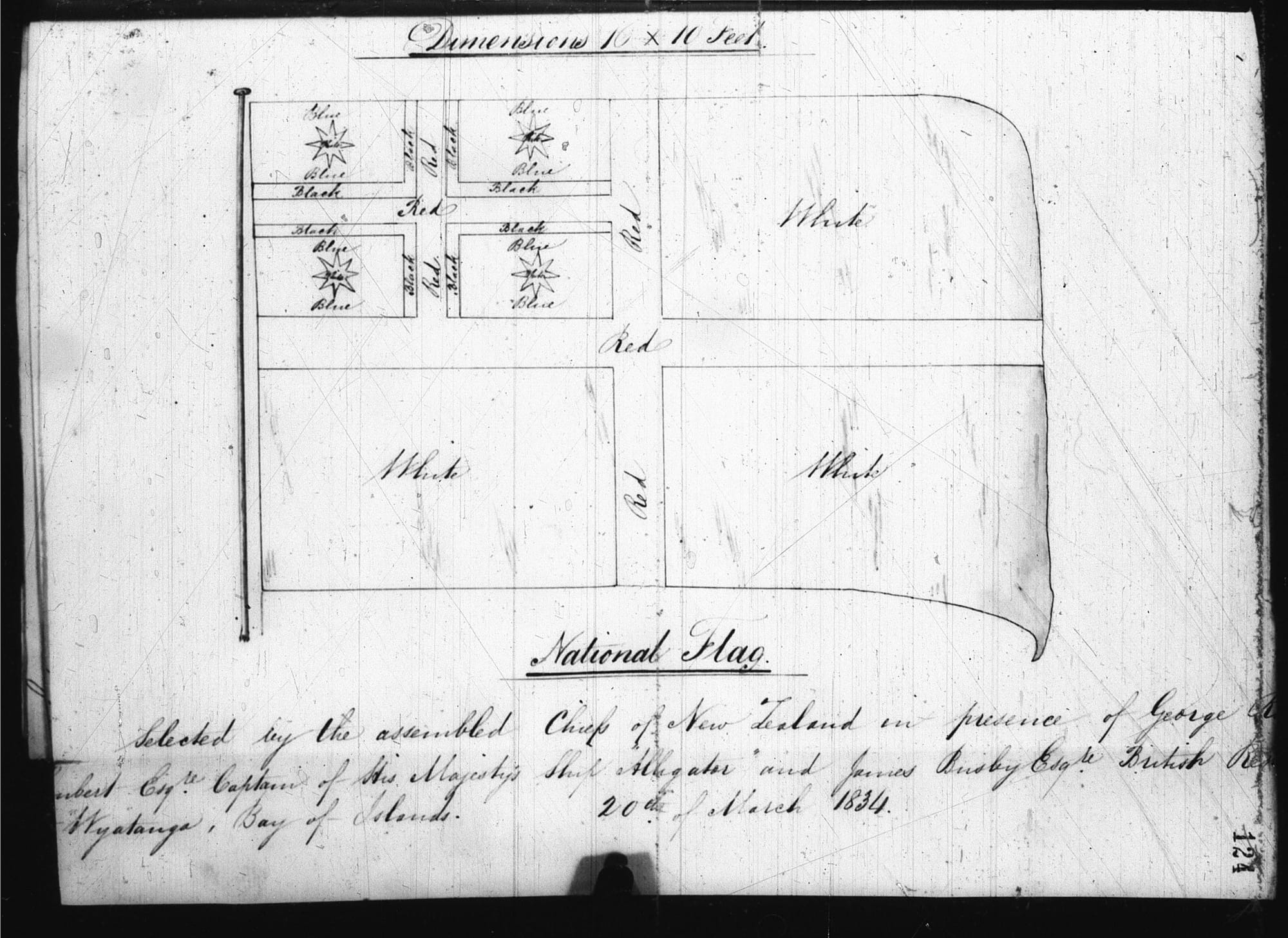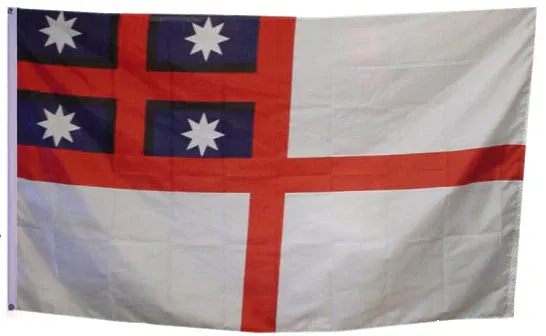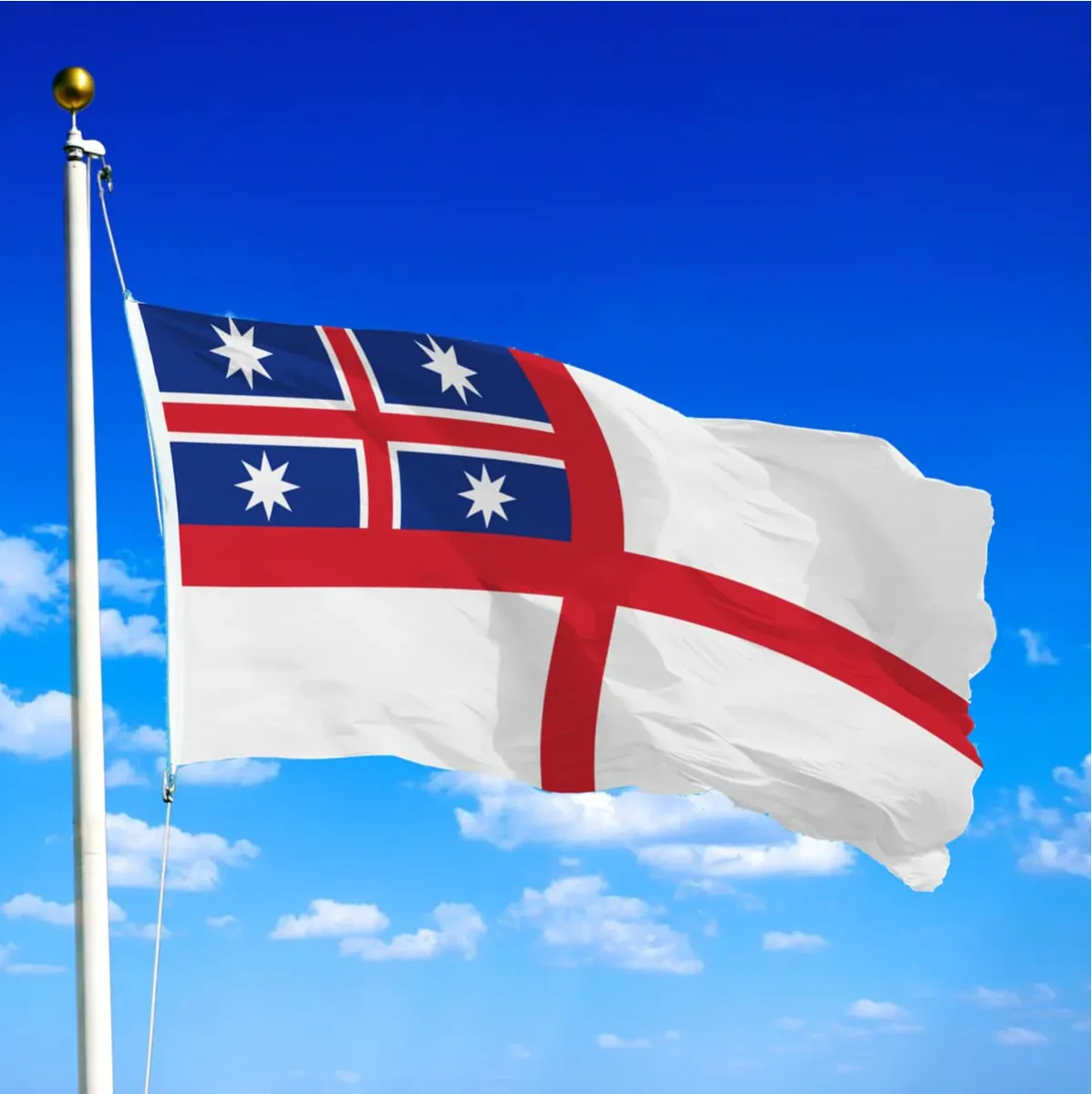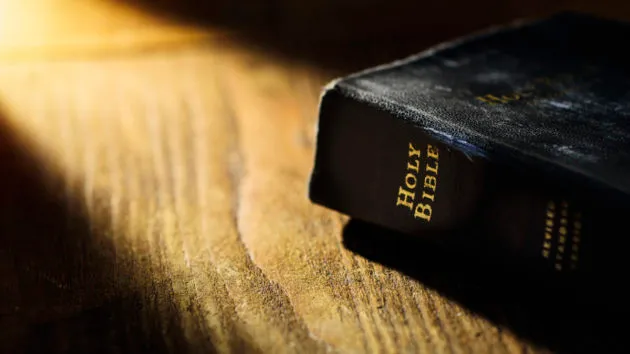Table of Contents
Geoff Parker
The United Tribes Flag (UTF) was not a Maori initiative, but a Pakeha-brokered expedient to protect New Zealand’s pre-Treaty commerce, and had nothing to do with sovereignty.

As Michael King’s Penguin History of New Zealand (pages 153–5) describes it, independent witness Austrian Baron von Hugel made it clear that the choosing of the UTF ceremony “was little short of a farce…The assembled chiefs…expressed much puzzlement…[and] politely proceeded to vote for all three.” For this service, the chiefs were rewarded with a large cauldron of porridge.
After the treaty was signed, the British Union Jack flag became the de facto flag of the colony of New Zealand. The current flag was designed and adopted for restricted use in 1869 and became the national flag in 1902.

The UTF was later adopted as a house flag by the now defunct Shaw Savill and Albion shipping line so it is now about third-hand; hardly appropriate for a sovereignty flag! if the UTF had any legal significance the Shaw Saville Albion shipping line would not have been able to adopt it as their flag.
1835 DECLARATION OF INDEPENDENCE
Maori supremacy activists are endeavouring to resurrect the Declaration of Independence 1835 (DOI) to further their fortunes and control of New Zealand. Some say it was ‘authorised’ when in fact the wording was ‘recognised’ by Britain.
The fact is, it was an unauthorised non-event cobbled together by James Busby. Because a French eccentric, Baron Charles de Thierry had already, by 1835, bought 40,000 acres from chiefs Nene and Patuone, Busby believed that there was a French plot to annex New Zealand. He therefore decided to declare New Zealand independent under the sovereignty of the United Tribes of New Zealand. Busby presented his Declaration of Independence to the chiefs on October 28, 1835, but only 39 chiefs signed. At least 10 signed later but nothing further eventuated and no further meetings were held.
It all fell apart within two years of the “Declaration” being signed – Ngapuhi began fighting among themselves and Chief Titore was killed. The “Declaration” was a short-lived and long-dead paper tiger (see Peter Hemmingson’s article below).
If the DOI had any validity it was nullified by the same Chiefs or their heirs signing the 1840 Treaty of Waitangi in which sovereignty was ceded. This Captain Hobson made sure of.
What noted historians say about the 1835 Declaration of Independence:
Claudia Orange:
Even though the declaration asserted sovereignty, Maori, who saw themselves as tribal rather than as members of a nation, would have been unable to exercise full rights as an independent state, there was no indigenous political structure upon which to base a united congress.
However, it did introduce Maori to the idea of a legal relationship with Britain and therefore, five years later, to the Treaty of Waitangi.
Michael King:
The Declaration had no reality, since there was in fact no national indigenous power structure within New Zealand.
King also pointed out that some of the United Tribes were at war with one another within a year of signing the Declaration.
Paul Moon:
The Declaration represented a regional goodwill agreement rather than a national document of truly constitutional significance.
Paul Moon:
Professor Moon is also critical of the way which the Tribunal elevates the importance of the 1835 Declaration of Independence:
“The Tribunal sees the Declaration as some profound assertion of Maori Sovereignty. However, the Declaration had no international status, and was regarded by British officials at the time as ‘a silly as well as an unauthorised act’. For some inexplicable reason, the Tribunal has again ignored all this evidence.”
http://www.nzherald.co.nz/maori/news/article.cfm?c_id=252&objectid=11358654
“a bloodless puerility”, wrote Pember Reeves in 1898
“a second and equally contrived ceremony”, wrote Michael King in 2003
“little more than pebble”, wrote Paul Moon in 2006
“a paper pellet”, said Governor Gipps in Sydney at the time
“silly and unauthorised”, said a Colonial Office official.
Peter Hemmingson writes:
The 1835 Declaration of Independence of the Confederation of United Tribes of New Zealand was driven by the puny number of Maori chiefs who signed it. This “paper pellet to fire at the French” was fudged together by Busby to head off Colonial Office fears of an impending takeover by French adventurer, Baron De Thierry.
Initially carrying the signatures (or rather the thumbprints) of 35 northland Chiefs, the declaration was ultimately signed by just 57 chiefs (at that time there were around 600 tribes in NZ), all residing north of the firth of Thames. Since these chiefs represented less than 10 per cent of all the tribes of New Zealand, the declaration can hardly be held up as evidence of a national consensus.
The arguments of Maori sovereignty activists are further undermined by the impotence of the handful of chiefs who signed the Declaration to act or even deliberate in concert.
Signatories had pledged “to meet in Congress at Waitangi in the autumn of each year, for the purpose of framing laws for the dispensation of justice, the preservation of peace and good order, and the regulation of trade”. Inter-tribal animosities meant this body never met nor passed a single law, despite their common undertaking to do so.
No functioning New Zealand-wide Government came into existence as a result of the Declaration.









